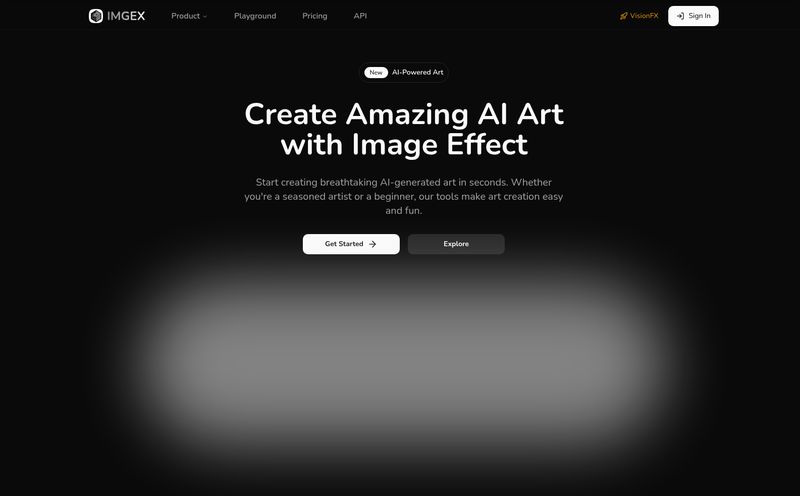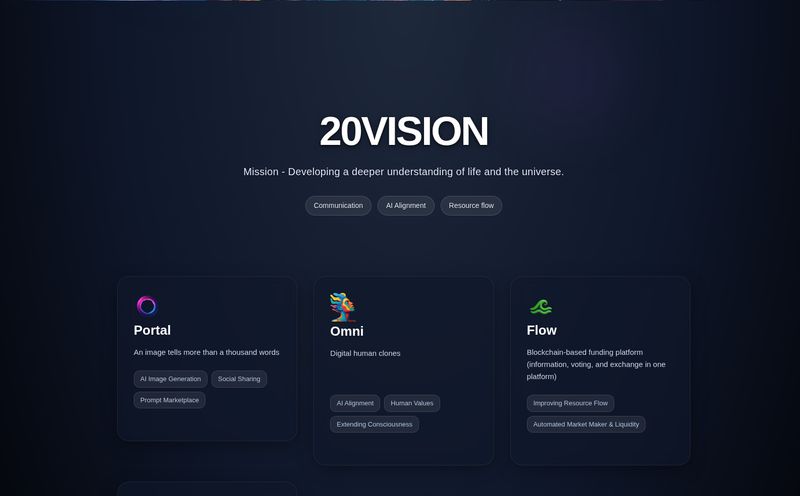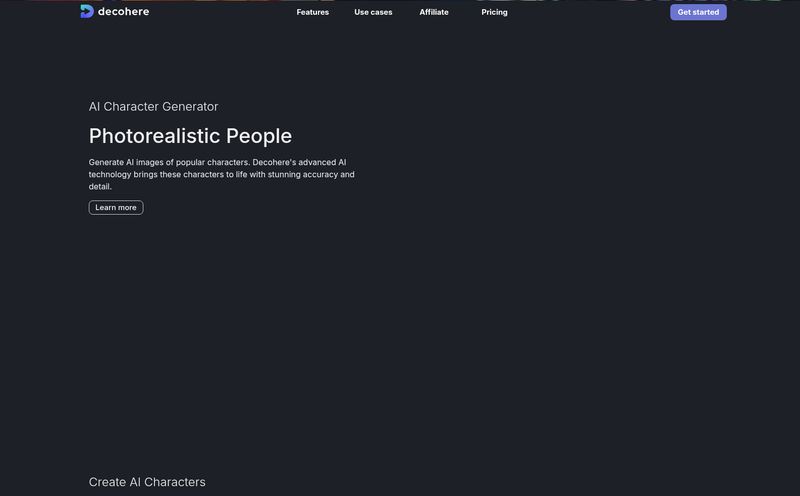Remember a while back when your social media feeds were suddenly flooded with moving, blinking, smiling portraits of long-gone relatives? It was that fascinating, slightly eerie trend that had everyone digging through old shoeboxes. For a moment, it felt like the moving pictures from Harry Potter were real. Well, that technology hasn't gone away. In fact, it’s become more accessible, and I recently went down the rabbit hole with a tool called Deep Nostalgia AI.
As someone who spends their days neck-deep in SEO, traffic trends, and the latest digital crazes, I'm a total sucker for this stuff. Is it a gimmick? Is it a genuinely useful tool for genealogists and storytellers? I had to find out. So I grabbed a coffee, found my favorite photo of my great-grandmother, and took the plunge.
So, What is Deep Nostalgia AI, Anyway?
Let's get one thing straight: this isn't just some cheap Instagram filter that wobbles a picture around. Deep Nostalgia AI uses, you guessed it, deep learning. It’s a sophisticated AI that has studied countless human faces and movements to intelligently predict how a person in a 2D photo might have moved. It analyzes the portrait, identifies the facial features, and then applies a realistic sequence of gestures—blinks, head tilts, subtle smiles.
The result? It breathes a flicker of life into a static image. It’s like a digital seance, but way less creepy and you don't need a Ouija board. You're taking a single moment frozen in time and giving it a few seconds of motion. And honestly, it’s kind of magical.

Visit Deep Nostalgia AI
My First Try: Bringing a Family Photo to Life
The process itself is ridiculously simple. The website promises a three-step process, and they aren't lying. You sign up, upload your photo, and let the AI do its thing. I chose a black-and-white photo of my great-grandmother. It's a lovely picture, but she's very stoic, very formal—a product of her time. I've always wondered what she was like in a casual moment.
I uploaded the image and waited. And not for long, either. In about a minute, a notification popped up. I clicked play, and… wow. There she was, my great-grandmother, turning her head slightly and blinking, with a gentle smile that wasn't in the original photo. It was subtle. It was natural. It was her. It was also weirdly emotional. I've spent my whole life looking at this stern, unmoving photograph, and in an instant, this AI gave her a spark of personality. It felt less like a historical document and more like a person.
The Good, The Bad, and The Spooky
Like any tool, it’s not perfect. But I was genuinely impressed. Here's my honest breakdown.
What I Loved
First off, the ease of use is a huge plus. You don’t need to be a video editor or a tech wizard to make this work. If you can upload a photo to Facebook, you can use this. The processing time is also lightning-fast. No leaving your computer on overnight. The animations themselves felt incredibly realistic for the most part, avoiding that stiff, robotic movement you see in some lesser tools. It maintains the person's original character, which is crucial. It doesn’t just paste a generic set of movements on top of a face; it seems to work with the facial structure. A big one for me is also their privacy promise – they state they automatically delete uploaded photos not tied to an account, which is a refreshing bit of reassurance in today's data-hungry world.
A Few Caveats
Now, for the reality check. The tool works best with clear, high-resolution, forward-facing photos. I tried a slightly blurry, profile shot of my great-uncle and the results were… less than stellar. A bit on the spooky side, if I'm being honest. The uncanny valley is a real thing, folks. Also, and this is a big one for the serious family historians out there, there's no batch processing. If you have a folder with 200 ancestral photos you want to animate, you'll be uploading them one by one. It’s a bit of a drag.
A Closer Look at the Features
The platform is pretty straightforward, but a few features stand out and are worth mentioning.
- AI-Powered Animation: This is the core engine. It's the deep learning model that makes the magic happen. It's not just motion; it's contextual motion.
- Preservation of Original Character: I can’t stress this enough. The goal is to animate your relative, not turn them into a generic animated avatar. And it does a pretty good job of this.
- Shareable Content: Once your video is ready, you get a clean MP4 file. Perfect for dropping into a family WhatsApp group, posting on social media, or using in a presentation about your family tree.
Is Deep Nostalgia AI Worth the Price?
Ah, the million-dollar question. Or, in this case, the $15-to-$60 question. There is no free plan, which is a bit of a bummer for people who just want to try one photo. You have to subscribe. The pricing is based on a credit system, where one credit equals one photo animation.
| Plan | Monthly Cost | Credits per Month | Cost per Credit |
|---|---|---|---|
| Super Advanced | $18.90 | 40 (480 total) | $0.47 |
| Advanced | $15.90 | 20 (240 total) | $0.79 |
| Premium | $29.90 | 100 (1200 total) | $0.30 |
| Starter | $59.90 | 300 (3600 total) | $0.19 |
Note: The plans seem to give you the full year's worth of credits upfront, which is a nice touch. All plans include high quality video, no watermark, and a commercial license.
My take? The Advanced Plan at $15.90/month feels like the sweet spot for a curious individual or family hobbyist. It gives you enough credits to play around with your core family photos without a huge commitment. The higher-tier plans are clearly aimed at power users, creators, or perhaps even businesses. The inclusion of a commercial license on all plans is interesting—it means you could legally use these animations in projects you monetize. Something to think about.
Beyond Family Photos: Some Creative Uses
While the obvious use is for genealogy, my marketing brain immediately started churning. How else could you use this?
- Education: Imagine a history teacher animating photos of historical figures like Abraham Lincoln or Marie Curie for a class presentation. Suddenly, history feels a lot more alive.
- Social Media Content: Remember that viral trend I mentioned? You could create unique, scroll-stopping content for platforms like TikTok or Instagram. Animate famous paintings, statues, or old advertisements.
- Digital Storytelling: If you're creating a documentary or a personal video project, weaving in these subtle animations could add a powerful emotional layer that static photos just can't match.
The possibilities are pretty broad once you start thinking of a 'photo' as any static image of a face.
Frequently Asked Questions
What exactly is Deep Nostalgia AI?
It's a web-based tool that uses artificial intelligence to add realistic motion, like blinking and smiling, to faces in still photographs, turning them into short, animated videos.
Is it hard to use?
Not at all. The interface is very user-friendly. It's a simple three-step process: sign up, upload a photo, and download the resulting animation. No technical skills are needed.
Are my photos safe when I upload them?
The platform states that photos uploaded without registration are automatically deleted to protect user privacy. If you register, your photos are associated with your account but they seem to take privacy seriously.
Can I animate a whole folder of photos at once?
Unfortunately, no. Currently, the tool does not support batch processing. You have to upload and animate each photo individually, which can be time-consuming for large collections.
Will the animation look exactly like the person moved?
The AI is very advanced, but it's still an interpretation. It creates a very plausible and realistic animation, but it's not a recording of an actual memory. For best results, use a clear, front-facing photo.
A New Way to Connect with the Past
So, is Deep Nostalgia AI just a fun toy? Yes, but I think it’s more than that. It's a powerful tool for connection. It bridges the gap between the static, formal past and our dynamic, video-centric present. Seeing a hint of motion in someone you've only ever known from a faded photograph creates a new kind of bond.
It’s not perfect, and the lack of batch processing is a definite drawback for serious researchers. But for the average person looking to experience their family history in a new light, it's a fascinating and emotionally resonant tool. It's a little bit of tech, a little bit of history, and a whole lot of heart. And for a moment, it let my great-grandma wink at me from across a century. And that’s pretty cool.
Reference and Sources
- Deep Nostalgia AI Official Website
- Official Pricing Page
- NPR: Deep Nostalgia Tech Brings Old Photos To Life (for context on the original trend)



